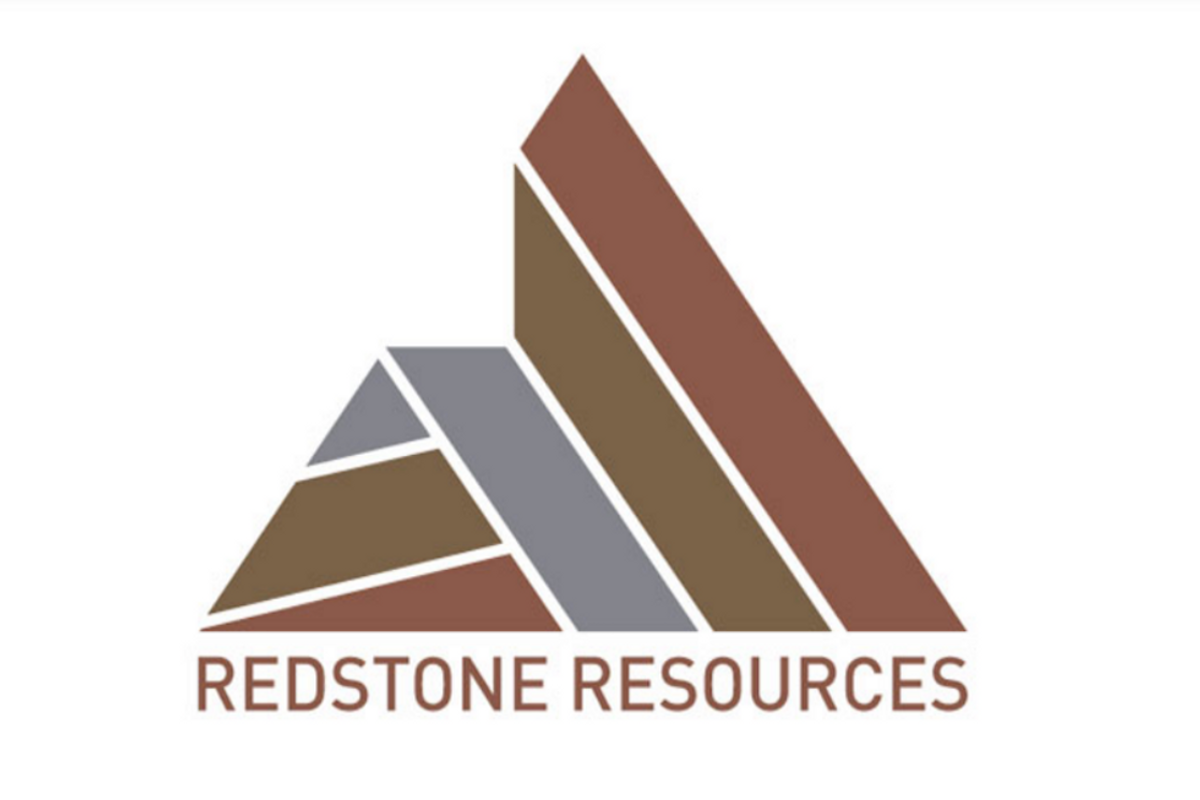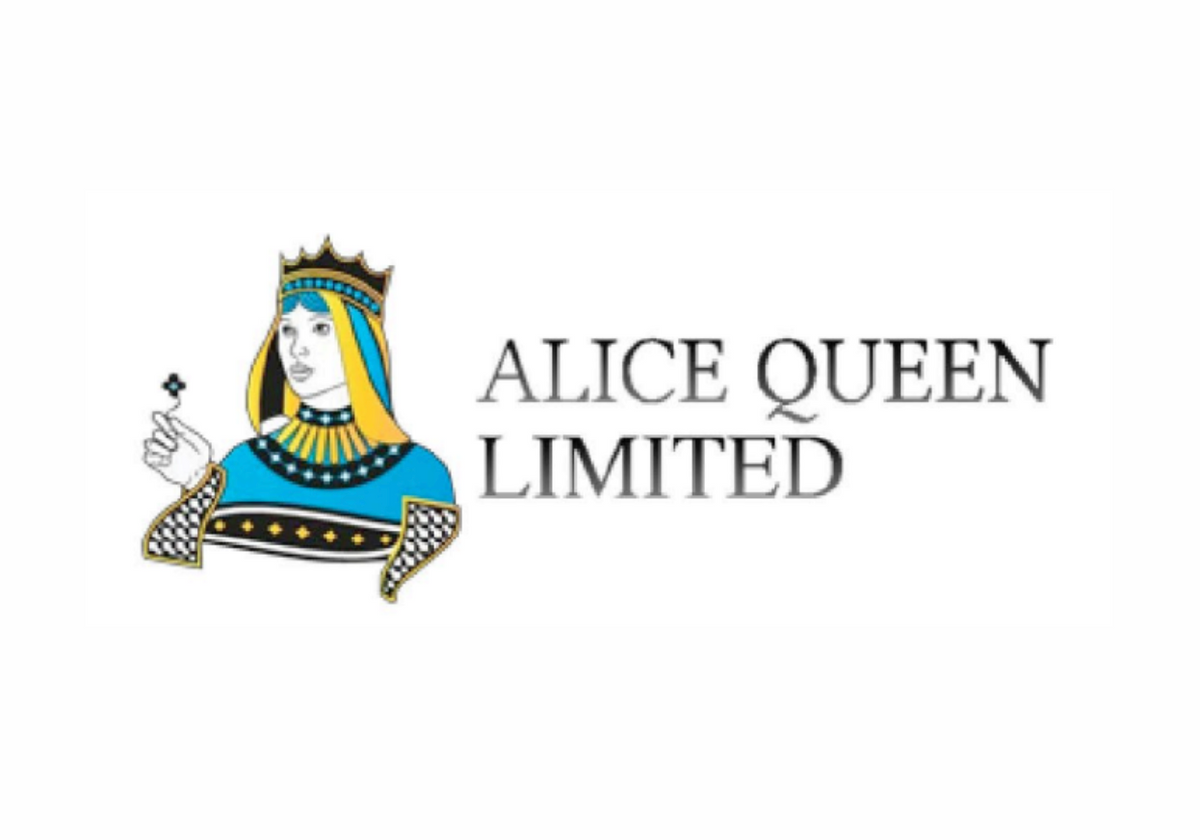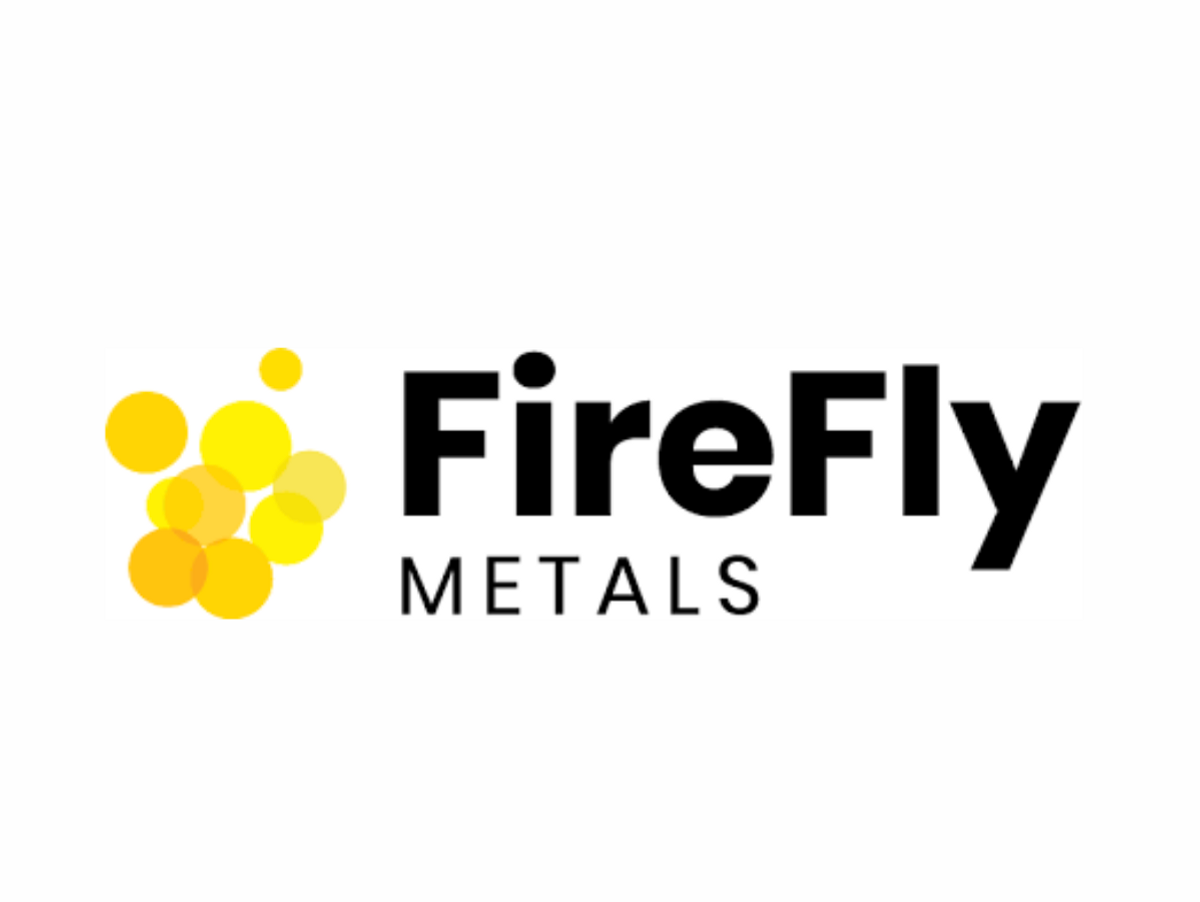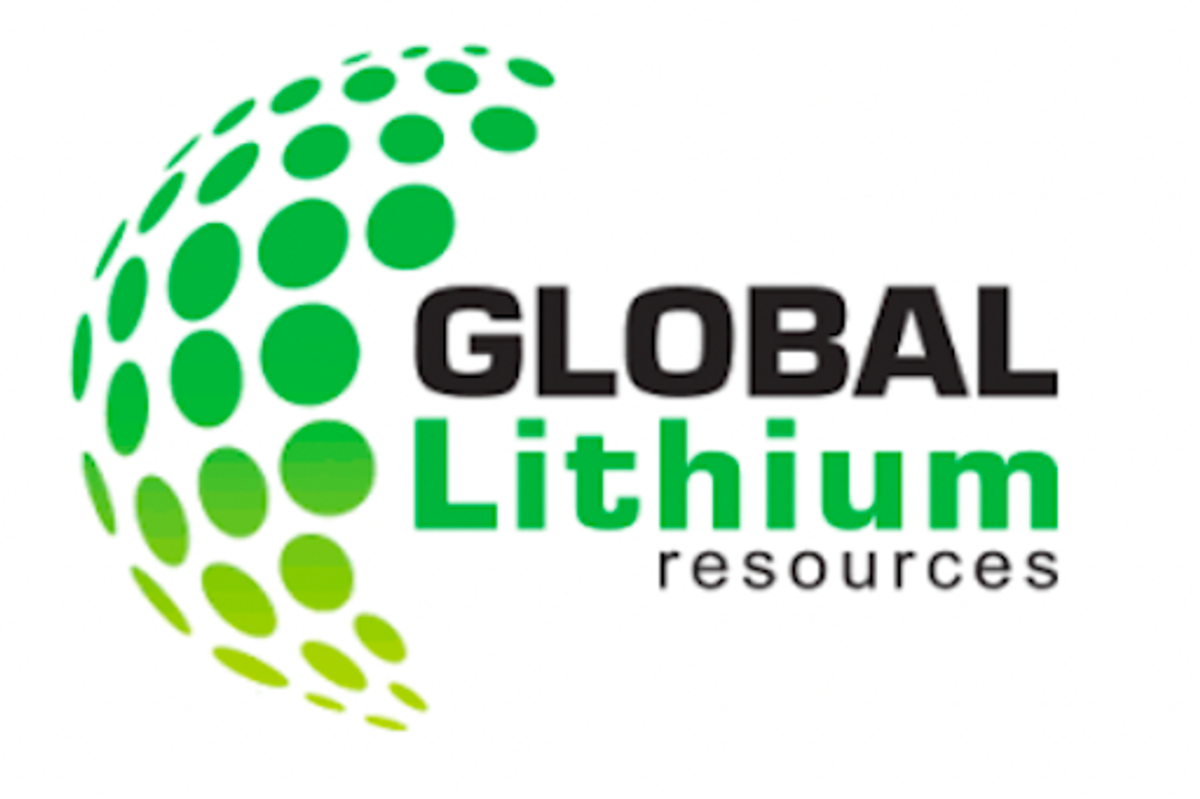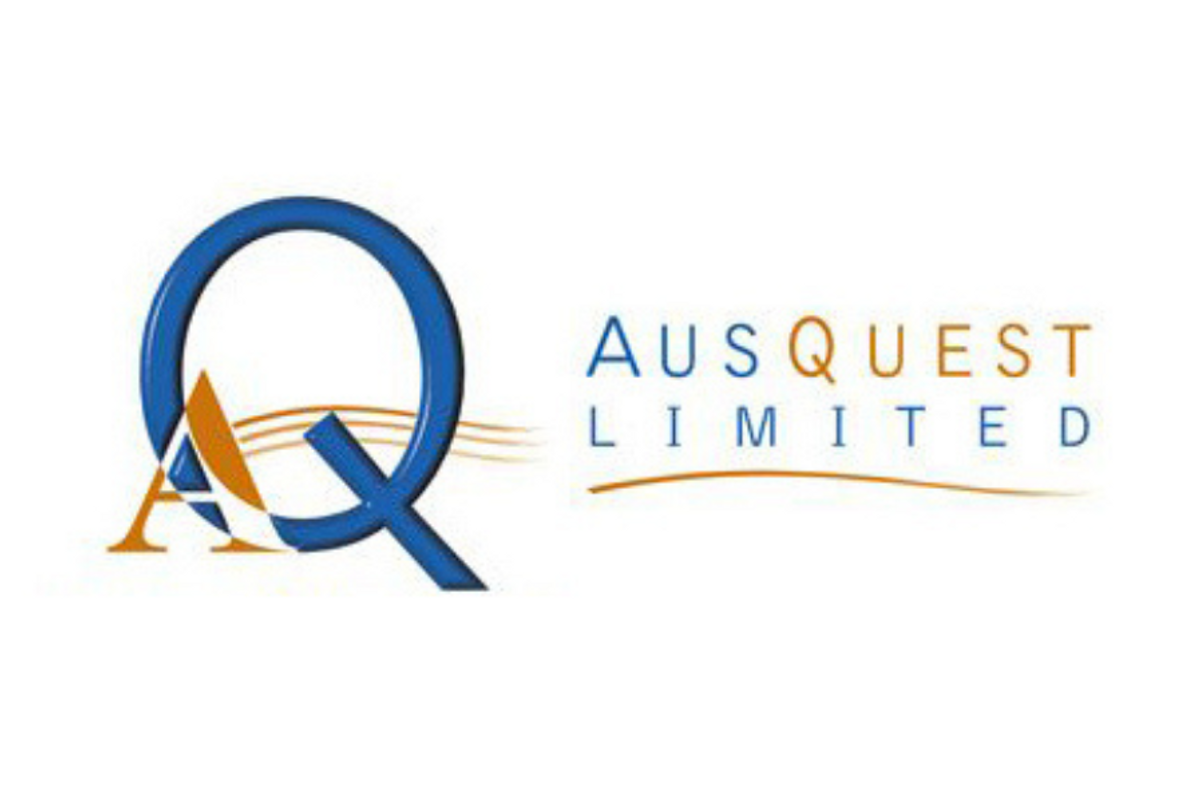- AustraliaNorth AmericaWorld
Investing News NetworkYour trusted source for investing success
- Lithium Outlook
- Oil and Gas Outlook
- Gold Outlook Report
- Uranium Outlook
- Rare Earths Outlook
- All Outlook Reports
- Top Generative AI Stocks
- Top EV Stocks
- Biggest AI Companies
- Biggest Blockchain Stocks
- Biggest Cryptocurrency-mining Stocks
- Biggest Cybersecurity Companies
- Biggest Robotics Companies
- Biggest Social Media Companies
- Biggest Technology ETFs
- Artificial Intellgience ETFs
- Robotics ETFs
- Canadian Cryptocurrency ETFs
- Artificial Intelligence Outlook
- EV Outlook
- Cleantech Outlook
- Crypto Outlook
- Tech Outlook
- All Market Outlook Reports
- Cannabis Weekly Round-Up
- Top Alzheimer's Treatment Stocks
- Top Biotech Stocks
- Top Plant-based Food Stocks
- Biggest Cannabis Stocks
- Biggest Pharma Stocks
- Longevity Stocks to Watch
- Psychedelics Stocks to Watch
- Top Cobalt Stocks
- Small Biotech ETFs to Watch
- Top Life Science ETFs
- Biggest Pharmaceutical ETFs
- Life Science Outlook
- Biotech Outlook
- Cannabis Outlook
- Pharma Outlook
- Psychedelics Outlook
- All Market Outlook Reports
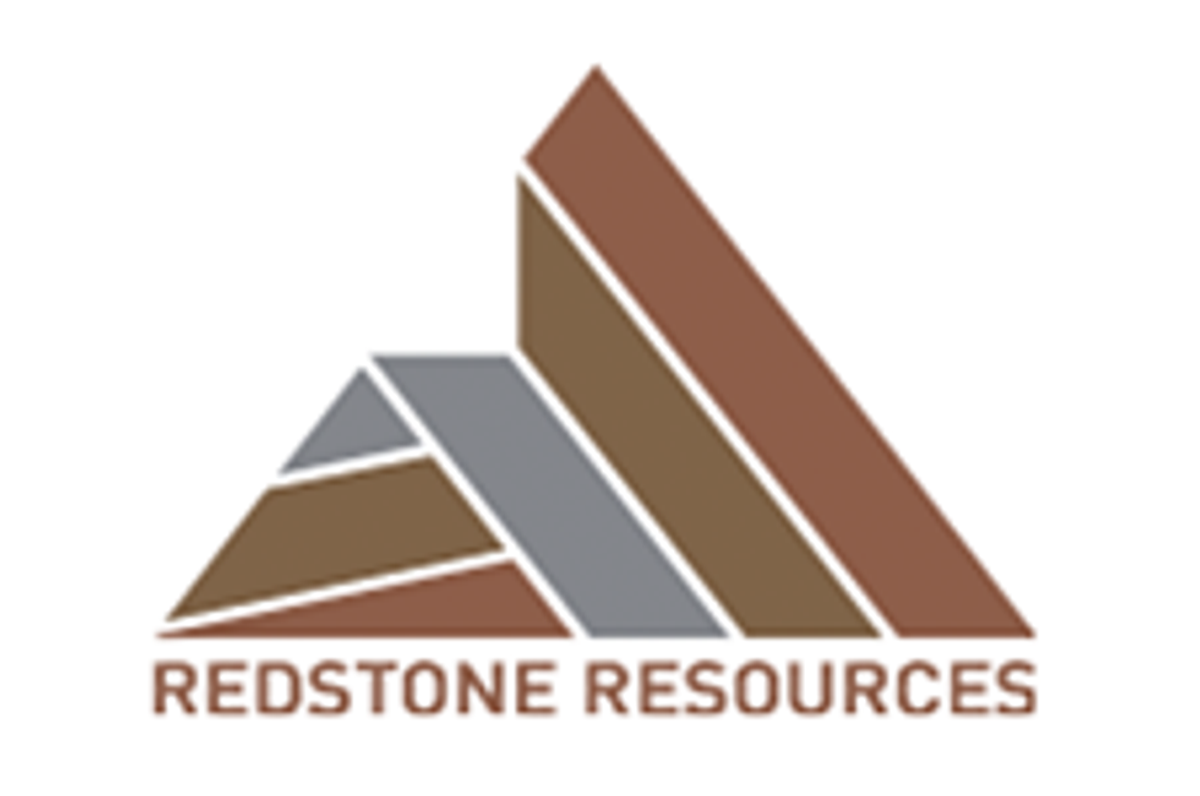
Quarterly Activities and Cashflow Report
Redstone Resources Limited (ASX: RDS) (Redstone or the Company) presents its quarterly report for the period ending 30 September 2023 (the Quarter).
HIGHLIGHTS:
RADISSON EAST AND SAKAMI LITHIUM PROJECTS – QUÉBEC, CANADA
- In July Redstone entered into an exclusive Option agreement to acquire a 100% interest in the Radisson East and Sakami Lithium Projects located in the prolific James Bay Lithium District, Québec, Canada
- Radisson East and Sakami are located in close proximity to several advanced lithium projects and new lithium discoveries in Canada (see Figure 6) including:
- Patriot Battery Metals Inc. (ASX:PMT, TSXV:PMET) Corvette Project (~170km east)
- Winsome Resources Ltd (ASX:WR1) Cancet Project (100km east)
- Q2 Metals Corp (TSXV: QTWO) Mia Lithium Property (~40km southwest)
- Projects have a combined area of 90km2 and cover more than 50km of highly prospective greenstone belt with coincident Li‐in‐lake anomalism and are host to several known pegmatite occurrences and outcrops (See Figures 3 to 5)
ATTWOOD LAKE LITHIUM PROJECT‐ NORTHWESTERN ONTARIO, CANADA
- Completion of Phase 1 exploration program comprising helicopter‐supported geological mapping and sampling program for lithium (Li) and rare‐earth element (REE) bearing pegmatites
- Numerous pegmatite showings were discovered on the project with a total of 209 rock grab samples collected from various pegmatitic bodies
REDSTONE AND GALAN LITHIUM JOINT VENTURE ‐ JAMES BAY PROJECTS AND ONTARIO PROJECTS
- Post Quarter end, Redstone expanded its Canadian lithium footprint by entering into a joint venture with Galan Lithium Ltd (ASX:GLN) to acquire 100% of the Taiga, Camaro and Hellcat Lithium Projects also located in the heart of the world class James Bay Lithium Province (see Figure 8)
- Initial exploration on James Bay Lithium Projects completed by Axiom Exploration identified 28 prospective pegmatite dykes
- The James Bay Lithium Projects cover 5,187 hectares adjacent to the Patriot Battery Metals (TSXV:PMET) CV8 pegmatite discovery – which has returned average sampling grades of 4.6% Li2O
- As part of the JV Redstone and Galan have also secured an option to acquire 100% of the PAK East and PAK Southeast Lithium Projects located in Ontario's “Electric Avenue” (see Figure 9)
MANAGEMENT COMMENTARY
Commenting on key progress made during the September quarter, Chairman Richard Homsany said:
“Redstone continues to position itself as a rapidly emerging critical metals exploration and development business, underpinned by our portfolio of high quality assets in Canada and Western Australia. As recently reported, Redstone has further strengthened its position in the highly sought after and prolific James Bay Lithium District and in Ontario – a region boasting several Tier‐1 lithium projects.
Redstone has very quickly and cost effectively built a portfolio of advanced lithium exploration assets in two of Canada’s premier jurisdictions. Our technical team will be the operator of our JV projects with Galan. Our strategy to increase our Canadian lithium exposure strongly supports our plans for our West Musgrave Copper Project in Western Australia.”
RADISSON EAST AND SAKAMI LITHIUM PROJECTS – JAMES BAY, QUÉBEC, CANADA
Redstone has a clearly defined strategy to build a high quality critical metals exploration and development business. As part of this strategy, the Company has continued to assess several new project opportunities both domestic and overseas.
Consequently, in early July 2023 Redstone secured an option to acquire a 100% interest over the highly prospective Radisson East and Sakami Lithium Projects immediately providing the Company with a strong position in the prolific James Bay Lithium district in Québec, Canada.
The Radisson East and Sakami Projects cover over 50km of greenstone belt strike length, which is geology that is known to host spodumene‐bearing pegmatites throughout the world class James Bay Lithium district. Greenstone belts are the key host geology at each high‐grade lithium project nearby including Corvette, Cancet and the Mia Lithium Project (Figure 1).
Click here for the full ASX Release
This article includes content from Redstone Resources, licensed for the purpose of publishing on Investing News Australia. This article does not constitute financial product advice. It is your responsibility to perform proper due diligence before acting upon any information provided here. Please refer to our full disclaimer here.

Redstone Resources Investor Kit
- Corporate info
- Insights
- Growth strategies
- Upcoming projects
GET YOUR FREE INVESTOR KIT
Redstone Resources
Investor Insight
Redstone Resources' (ASX:RDS) strategic exploration of copper and other base metals in Western Australia's West Musgrave region, coupled with its lithium acquisition in Canada, positions the company to potentially capitalize on the growing global demand for battery metals, leveraging its 100 percent ownership of its West Musgrave project and proximity to significant existing deposits.
Overview
Australia is supporting this growth in demand through its mining-friendly, tier-1 jurisdictions. The country is a world leader in producing and exporting a plethora of metals and minerals, including iron, copper, lithium, nickel, bauxite and gold. Australia produces significant amounts of 19 in- demand minerals from more than 350 operating mines. The Musgrave Province contains a Mesoproterozoic crystalline basement terrain that reaches across the shared borders of Western Australia, the Northern Territory and South Australia. The terrain has significant deposits of several essential metals, including nickel, platinum group elements (PGEs), copper, gold, lead, zinc, chromite, and rare earth elements (REEs). Yet, much of Musgrave remains underexplored, especially for the base metals the world now needs.
Redstone Resources (ASX:RDS) is a base and precious metals exploration company, exploring its 100-percent-owned, highly prospective West Musgrave Project, which includes the Tollu Copper deposit, located in the West Musgrave Province of Western Australia. The company’s West Musgrave Project is located proximal to BHP’s world-class Nebo-Babel nickel-copper- PGE sulphide deposit and Succoth copper (nickel, palladium) deposit, and Nico Resources’ Wingellina nickel-cobalt project.
Redstone also has other pending tenement applications prospective for base metals in the same region. The company is led by a management team with expertise in geology and mineral exploration, business development and corporate law, creating confidence in the team’s ability to capitalize on its assets.

The unique Musgrave terrain has already drawn the interest of notable miners, such as BHP. BHP has progressed with the development of its Nebo-Babel nickel-copper-PGE sulphide deposit, following grant of final regulatory approval to begin construction of the Nebo-Babel mine. The Nebo-Babel nickel-copper-PGE sulphide deposit has been estimated to have a resource of 390 million tonnes grading 0.33 percent copper and 0.30 percent nickel, for 1.2 million tonnes of contained nickel metal and 1.3 million tonnes of contained copper metal (Mea + Ind + Inf – 2012 JORC). Other discoveries and deposits in the area, such as the Wingellina nickel-cobalt deposit, indicate the potential of the West Musgrave region to become a significant base metal jurisdiction.
Redstone’s flagship, 100-percent-owned West Musgrave Project is situated between these two deposits — approximately 40 kilometres east of BHP’s Nebo Babel nickel-copper-PGE deposit and 50 kilometres west-southwest of Nico Resources’ Wingellina nickel-cobalt deposit.
Redstone’s West Musgrave Project is highly prospective yet largely underexplored. The asset has the right geological and structural setting for large magmatic nickel-copper sulphide deposits, volcanic-hosted massive sulphide (VHMS) deposits and other large intrusive related hydrothermal systems.
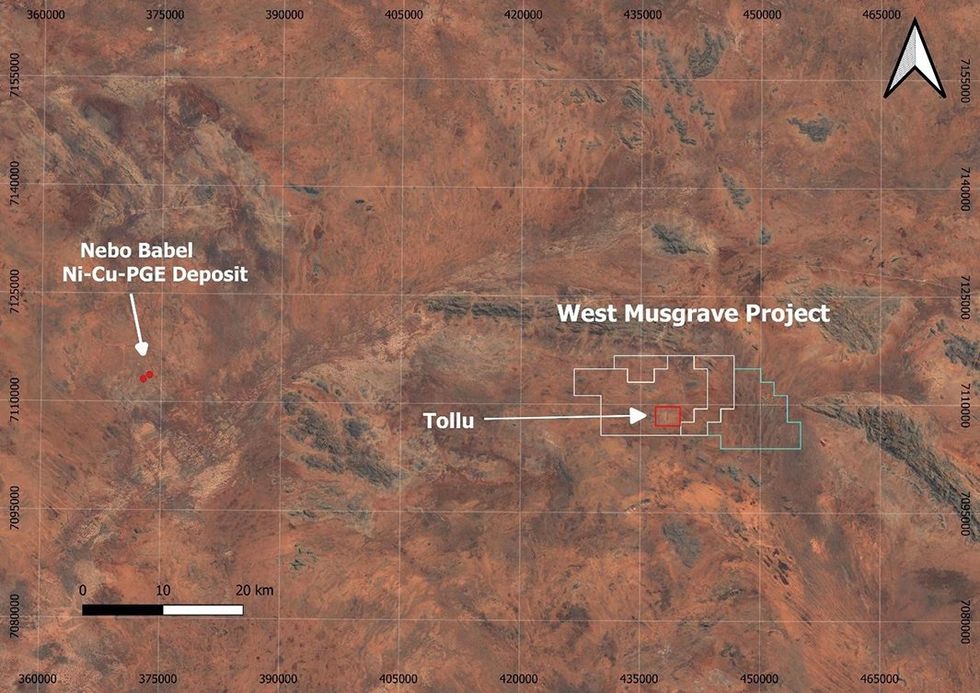
Location of Redstone’s West Musgrave Project, which includes the Tollu copper deposit, in relation to the world-class Nebo-Babel Ni-Cu-PGE deposit.
The 100-percent-owned Tollu copper vein deposit, located within the West Musgrave project, has a JORC-compliant indicated and inferred resource estimate of 3.8 million tonnes grading 1 percent copper, for 38,000 tonnes of contained copper with a cut-off of 0.2 percent. There is also a current estimated conceptual exploration target*, suggesting a potential for up to 627,000
tonnes of copper at Tollu. (*conceptual exploration target ranges from 31 to 47 million tonnes of mineralization at 0.8 to 1.3 percent copper, containing 259,000 to 627,000 tonnes copper.)
Outside Australia, Redstone Resources is an emerging battery metals explorer and has been building its portfolio of lithium and other critical mineral assets in Canada.
Redstone Resources also recently entered into a 50/50 joint venture agreement with Galan Lithium (ASX:GLN), aqcuiring 100 percent of the highly prospective suite of lithium projects that include the Camaro, Taiga and Hellcat Projects located in the prolific James Bay Lithium District in Quebec, host to several advanced lithium projects and new lithium discoveries in Canada including:
- Patriot Metals (ASX:PMT,TSXV:PMET) Corvette Project
- Winsome Resources Ltd (ASX:WR1) Cancet Project; and
- Q2 Metals Corp (TSXV:QTWO) Mia Lithium Project.
Patriot’s CV8 pegmatite discovery is located only 1.4 km north of the Taiga Project and the newly discovered CV13 pegmatite cluster is located 1.5 km north of the Camaro Project
Redstone will be the manager of the joint venture which covers 5,187 hectares of tenure.
An experienced management team leads Redstone with decades of experience in the mineral resources sector, with expertise in mineral exploration, mining operations and corporate finance.
Company Highlights
- Redstone Resources is an Australia-based mineral exploration company exploring highly prospective properties for copper and other base metals in the West Musgrave region of Western Australia.
- The West Musgrave region has already drawn the interest of miners who have made significant discoveries, including the world-class Nebo-Babel nickel-copper-PGE sulphide deposit and the Wingellina nickel-cobalt deposit.
- Redstone’s flagship West Musgrave Project is located near these existing projects, only 40 km west of BHP’s Nebo-Babel deposit, indicating the potential of the company’s tenure.
- The company owns 100 percent of the West Musgrave Project, which includes the Tollu Copper vein deposit.
- It has the right geological and structural setting for large magmatic nickel-copper sulphide deposits, VHMS deposits and other large intrusive-related hydrothermal systems
- The Tollu Copper vein deposit is proof of a significant hydrothermal system in the project area.
- Redstone Resources has also entered into a 50/50 joint venture agreement with Galan Lithium (ASX:GLN), acquiring a 100 percent of a highly prospective suite of lithium projects in James Bay, Quebec.
- The Redstone and Galan Lithium joint venture project acquisitions in James Bay complement the company’s West Musgrave and its strategy to increase exposure to the growing global battery metals and explore for critical minerals in high demand.
- A strong management team leads the company with decades of experience in the resources sector.
Key Projects
The West Musgrave Project
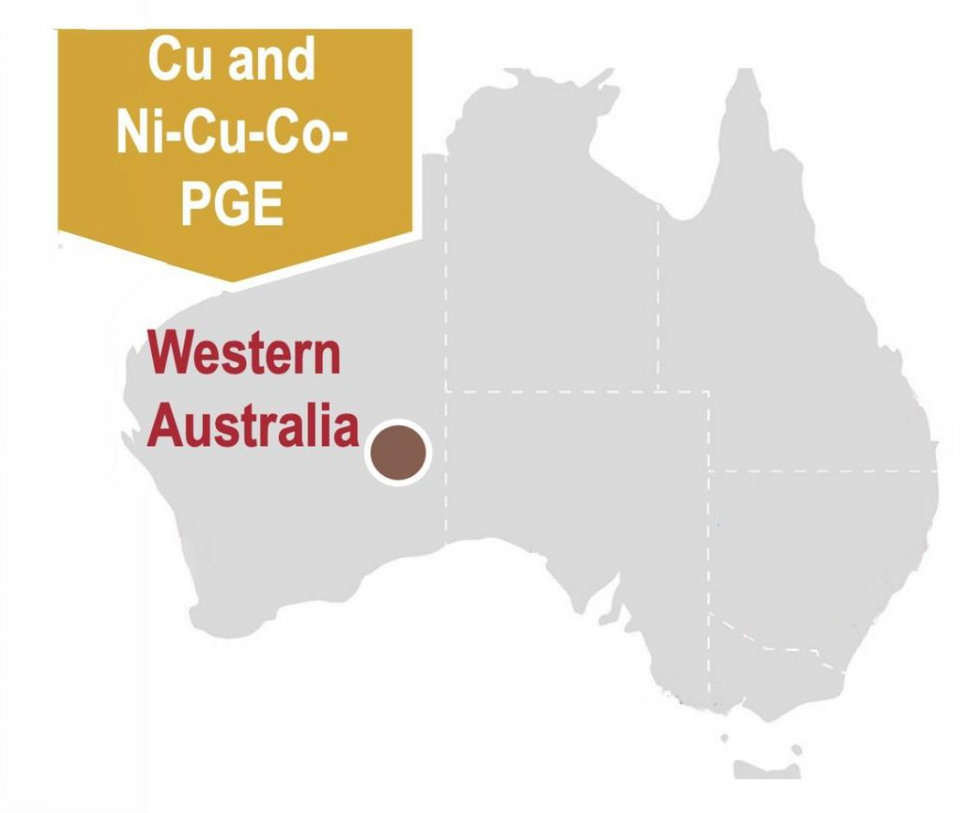
The West Musgrave Projectcovers 237 square kilometres of highly prospective yet underexplored terrain. The asset is 40 kilometres east of the world-class Nebo-Babel nickel- copper-PGE sulphide deposit owned by BHP, and contains suitable geological structure and settings for nickel-copper deposits. Redstone plans to continue the exploration of the asset to follow up on recent drilling and exploration results which identified numerous prospective targets.
Significantly, recent drilling some 7.5 km northeast of the Tollu Copper Vein deposit has confirmed for the first time the presence of mafic-ultramafic intrusions on the project, which are potential host and/or source rocks for nickel-copper-PGE ± cobalt mineralisation. This confirmation is significant for Redstone especially considering the western boundary of the project area is only 40 kms east of the BHP-owned world-class Nebo Babel nickel-copper-cobalt-PGE deposit and may also be a potential explanation for a source of the high grade copper at Tollu.
The Tollu Copper Vein Project
Redstone’s Tollu Copper Vein deposit is located within the broader West Musgrave Project and has already produced promising drilling results. Tollu hosts a giant swarm of hydrothermal copper-rich veins in a mineralized system covering an area of at least 5 square kilometres.
Copper mineralization is exposed at the surface and forms part of a dilation system within and between two major shears.
Redstone has defined a JORC 2012 resource estimate for Tollu of 3.8 million tonnesgrading 1 percent copper, for 38,000 tonnes of contained copper and 0.01 percent cobalt, which equates to 535 tonnes of contained cobalt. However, the company considers that this estimate may be far greater with further drilling.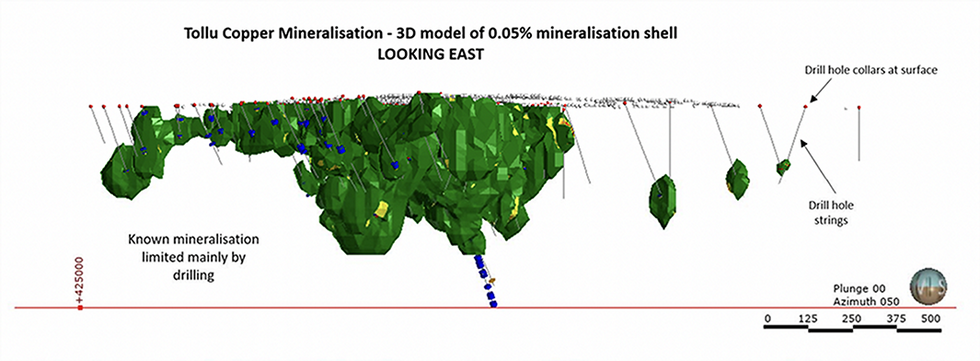
Drilling results from Redstone Resources’ most recent exploration program continue to deliver outstanding copper results for the Chatsworth and Forio prospects at the Tollu Copper Vein deposit.
At Chatsworth, recent RC drill hole TLC205 intersected 11 metres at 1.2 percent copper from only 29 metres downhole, extending the previously intersected high‐grade copper lens a further 20 metres towards the surface.
Together with previous drilling, TLC205 has shown that the targeted high grade copper lens at Chatsworth is up to 26 metres thick (downhole), has a copper grade always over 1 percent copper and extends over 140 metres vertical from TLC205 to its deepest intersection to date in TLC188 at 174 metres-184 metres downhole. No drilling has been tested beneath the intersection in TLC188 and so this significant, up to 26 metre thick (downhole) vertically long high-grade copper lens remains open at depth.
Previous significant intersections at Chatsworth also include:
- TLC188 - 10m at 2.51 percent Cu from 174m downhole including:
- 3m at 4.71percent Cu from 175m downhole;
- TLC189 - 26m at 1.46 percent Cu from 61m downhole including:
- 1m at 5.1percent Cu from 84m downhole;
- TLC033 - 5m at 2.21percent Cu from 100m downhole; and
- TLC034 - 15m at 1.39 percent Cu from 136m downhole including:
- 3m at 3.67 percent Cu from 122m downhole.
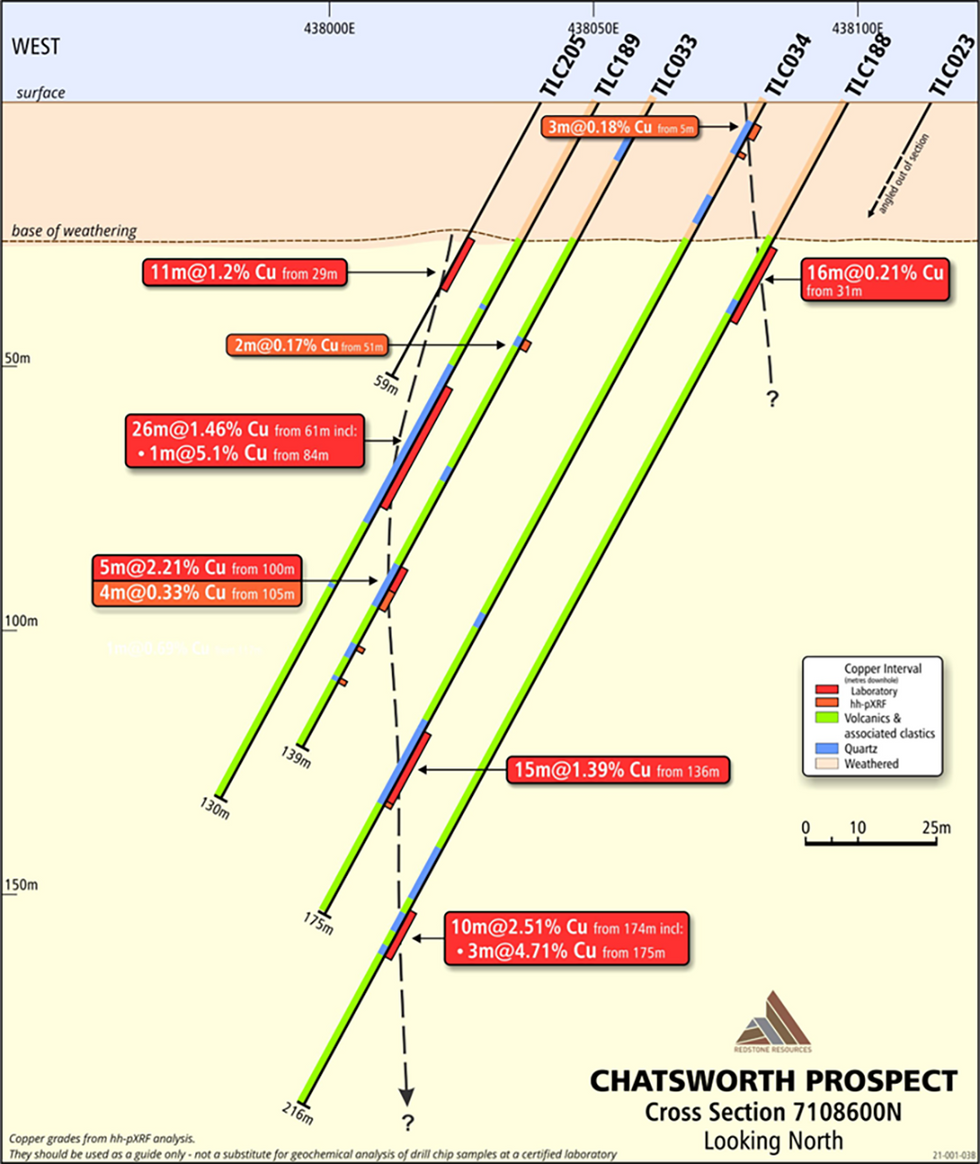
E-W Cross-section of high grade copper lens at Chatsworth Prospect, Tollu Copper Deposit. Recent intersection in RC drill hole TLC205 is shown along with intersections from 2021 drilling in TLC188 and TLC189 as well as intersections in historical drilling, RC drill holes TLC033 and TLC034
Recent drilling has also delivered further high-grade intersections at Forio, including the highest Cu grade ever intersected with 1 m at 18.5 percent copper from 18 m downhole in RC drill hole TLC203.
Drilling completed at Forio in late 2022 RC drilling campaign at Tollu were aimed at testing the continuity along strike of a zone of high grade copper lenses at Forio identified in previous drilling.
The high grade Cu intersections at Forio include:
- 8 m at 4.1 percent copper from 13 m downhole depth (TLC203) including 1 m at 18.5 percent copper from 18 m downhole.
- 4 m at 1.2 percent copper from 45 m downhole (TLC203)
- 6m at 1.47 percent copper from 80 m downhole (TLC201).
The significant drilling intersections of high‐ grade copper mineralisation at both the Chatsworth and Forio Prospects (dating back to 2017) at Tollu are yet to be included in the existing JORC 2012 Tollu resource estimate.
Redstone and Galan 50/50 Joint Venture
James Bay Lithium Projects - Taiga, Camaro and Hellcat
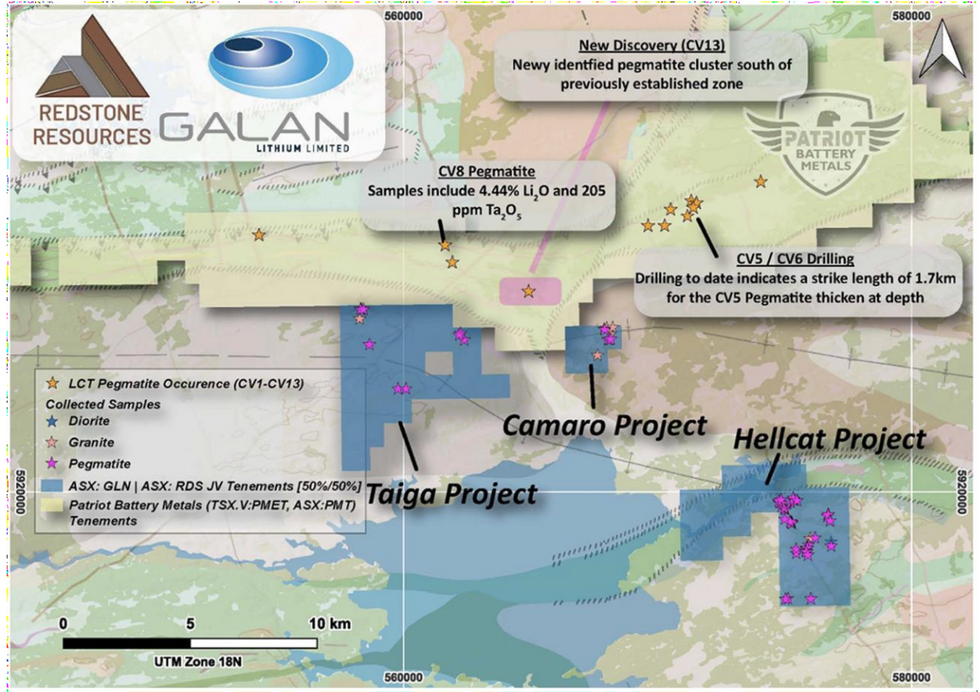
The Redstone and Galan 50/50 JV recently acquired the James Bay Lithium Projects, namely three high quality projects consisting of Taiga, Camaro and Hellcat Projects (TCH). The projects cover 3,850 hectares and are adjacent to Patriot Battery Metals’ (TSXV:PMET) Corvette Lithium discovery in James Bay. PMET’s CV8 pegmatite is one of the finest new hard rock lithium discoveries, with grab samples averaging 4.6 percent lithium oxide Li2O, and is located only 1.4 kilometres north of the Taiga Project. PMET’s newly-discovered CV13 pegmatite cluster is located 1.5 kilometres north of the Camaro Project.
James Bay Project Highlights:
The Taiga and Camaro are situated in the Meso-Archean to Paleoproterozoic La Grande Subprovince of the Superior Province underlain by the Poste Le Moyne and Langelier plutons, respectively. The Camaro project is hosted in the Semonville Pluton with local windows of the Rouget Formation metabasalt. Properties are hosted in hornblende biotite diorite, quartz-rich diorite, biotite hornblende tonalite, granodiorite, granite, conglomerate, wacke, and amphibolite. The Hellcat Project hosts Vieux Comptoir Granitic suite believed to be the source of the spodumene-bearing pegmatite dykes found within the region. The primary greenstone within the project is amphibolites of the rouget greenstone belt, a similar age to the Grupe de Guyer greenstone belt, located within Patriot Battery Metals Corvette discovery.
Previous initial exploration on the James Bay Lithium Projects completed by Axiom Exploration identified 28 prospective pegmatite dykes.
Board and Management
Richard Homsany - Non-executive Chairman
Richard Homsany is executive vice-president of Mega Uranium, a Toronto Stock Exchange listed company and executive chairman of Toro Energy Limited, an ASX-listed uranium company. He is also the non-executive chairman of Galan Lithium and the Health Insurance Fund of Australia Limited.
Prior to this Homsany was a corporate and commercial advisory partner with one of Australia’s leading law firms. He is currently the principal of Cardinals Lawyers and Consultants and has been admitted as a solicitor for over 20 years. Homsany has extensive experience in corporate law, including advising public resources and energy companies on corporate governance, finance, capital raisings, takeovers, mergers, acquisitions, joint ventures and divestments.
He also has significant board experience with publicly listed resource companies and in the resources industry. He has also worked for an ASX top 50-listed internationally diversified resources company in operations, risk management and corporate.
Homsany is a certified practicing accountant and is a fellow of the Financial Services Institute of Australasia (FINSIA). He has a commerce degree and honors degree in law from the University of Western Australia and a graduate diploma in finance and investment from FINSIA.
Edward van Heemst - Non-executive Director
Edward van Heemst is a prominent Perth businessman with over 40 years of experience in managing a diverse range of activities with large private companies.
He is the managing director of Vanguard Press and was previously the long-time chairman of Perth Racing (1997 to 2016). He was also appointed as non-executive chairman of NTM Gold, an ASX-listed company from July 2019 to March 2021.
Van Heemst holds a bachelor of commerce degree from the University of Melbourne, an MBA from the University of Western Australia and is a member of the Institute of Chartered Accountants Australia.
He has extensive knowledge of capital markets and established mining industry networks.
Brett Hodgins - Technical Director
Brett Hodgins has over 20 years of professional experience in the resources sector primarily focused on exploration and mining operations. He began his career as a geologist with Robe River Mining and Rio Tinto Iron Ore. During that time he was involved with the commissioning and development of the West Angelas and Hope Downs operations. Hodgins' recent roles include general manager project development for Iron Ore Holdings and he is president/CEO of Central Iron Ore Ltd, a TSXV-listed company gold and iron ore explorer. He brings a wide range of experience in exploration, feasibility studies, operations, and has a broad knowledge of the resource sector.
Hodgins has completed a bachelor of science degree with honors in geology from Newcastle University, diploma of management and a graduate diploma in finance and investment from FINSIA.
Dr. Greg Shirtliff – Geological Consultant
Dr. Greg Shirtliff has over 20 years of experience in industry-related geology and geochemistry, including a PhD in mine-related geology from the Australian National University. Since his studies, Shirtliff has spent over 17 years in various roles in the mining and exploration industry ranging from environmental, mine geology, resource development, exploration and management roles, exploration and technical projects inclusive of engineering and metallurgical. His roles have included several years at ERA-Rio Tinto’s Ranger Uranium Mine, as the senior geoscientist for Cameco Australasia and more recently as the lead geologist and technical manager for Toro Energy Ltd, an ASX-listed uranium development company in Australia where he is the exploration and technical lead responsible for increasing the viability of the company’s uranium and mineral resources, developing and directing the company’s uranium and non- uranium exploration strategy, aiding the company technically through EPA approval for a uranium, and guiding the engineering and metallurgical through to scoping level economic assessment.
Shirtliff has had recent exploration success at Toro Energy, discovering multiple zones of massive nickel sulphide mineralization along the Dusty Komatiite, arguably the first massive nickel sulphide mineralization discovered in the Yandal Greenstone Belt in Western Australia. Shirtliff holds directorships on privately owned consultancy and prospecting companies.
Shirtliff is a long-standing member of the Australian Institute of Mining and Metallurgy and the internationally recognized Society of Economic Geologists.
Quarterly Activities and Cashflow Report
Drilling Commenced at Viani in Fiji
Alice Queen Limited (ASX:AQX) (“Alice Queen” or the “Company”) is pleased to announce that drilling has commenced at its 100% owned Viani Project in Vanua Levu, Fiji (see Image 1). The initial planned three-hole diamond drilling program will test for high-grade epithermal gold-style mineralisation intersected at the Viani Project by historic drilling.
HIGHLIGHTS
- The Phase 1, three-hole diamond drilling program has commenced at the Viani Project, Fiji and will test for extensions to the quartz vein gold mineralisation at depth.
- Phase 1 is expected to be completed in early 2025, with plans for additional drilling under the same program dependent on the initial results
- The Viani Project (SPL1513) covers an area of approximately 200km2 and is largely underexplored.
- At the Dakuniba prospect within Viani, low sulphidation epithermal high-grade gold mineralisation has been mapped over >3km strike length.
- Diamond drilling completed by Japan International Cooperation Agency (JICA) in 1995 to 1997 intersected high-grade gold in low sulphidation epithermal quartz veins, including 0.6m @ 27.6 g/t Au.
With drilling underway, Alice Queen is positioned to test the epithermal gold-style mineralisation identified in historic drilling at the Viani Project. Weather permitting, we anticipate completing the Phase 1, three-hole diamond drilling program in early 2025. Following this, our exploration team will mobilise the drill rig to the Sabeto Project in Fiji to maintain the momentum of this campaign. To deliver timely results to shareholders, we intend to accelerate the analysis of the drill core at ALS Brisbane.”
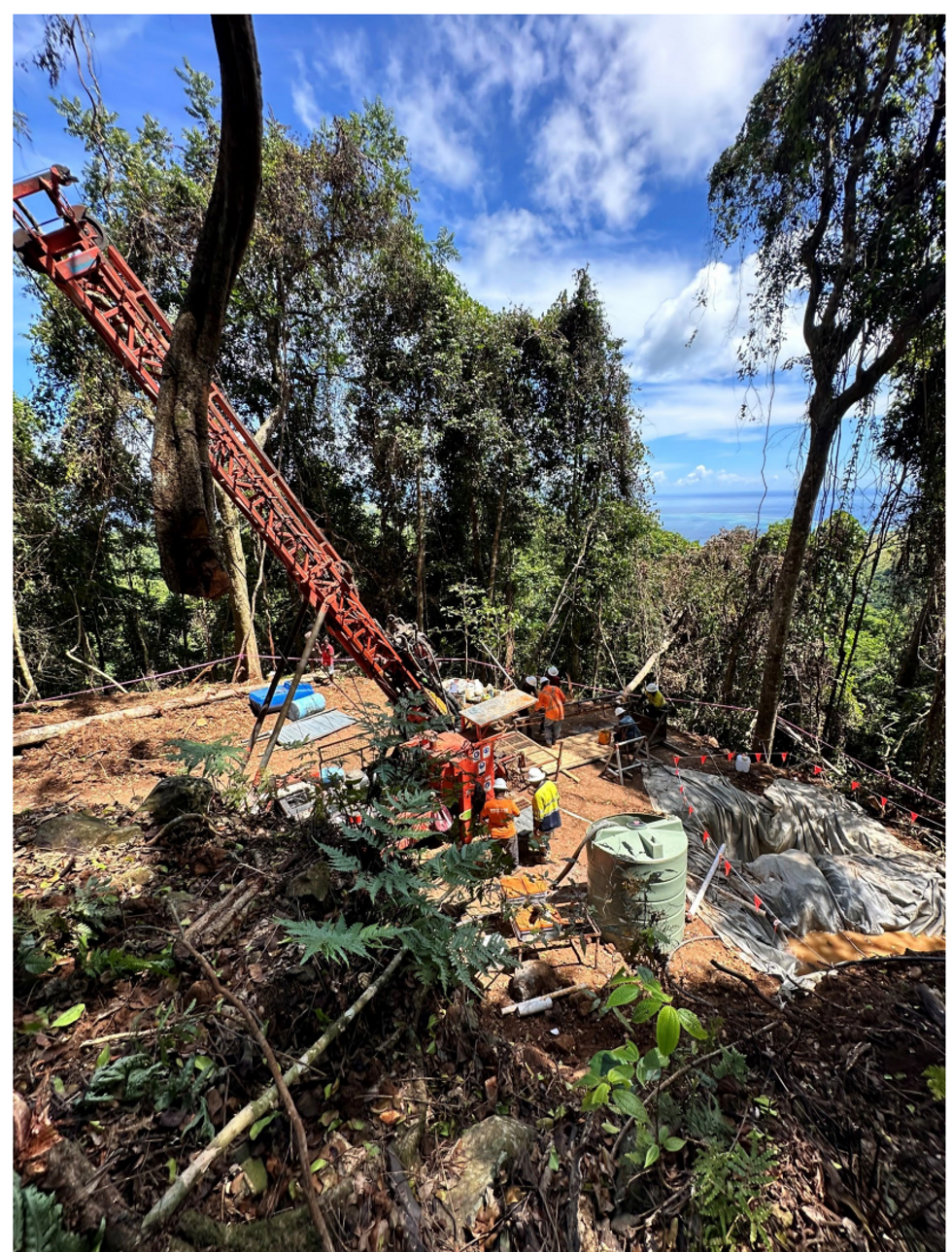
Details
Geology
The geology of the Viani Project (SPL 1513) comprises olivine basalts and volcaniclastics of the Natewa Volcanic Group which are intruded by andesite sills and dykes. In the 1940s, gold mineralisation was found by local prospectors near the village of Dakuniba. At Dakuniba, low sulphidation style epithermal gold occurs in quartz veins, and silicified rocks along a 3km long NE trending zone.
In 1995-1997, Japan International Cooperation Agency (JICA) drilled six diamond holes at Dakuniba and intersected high-grade gold in chalcedonic, crustiform, colloform banded quartz veins at depths of 50m to 100m below surface (i.e. MJVFV-5 intersected 2.2m @ 11.3 g/t Au, incl 0.6m @ 27.6 g/t Au at 121m downhole). This high-grade gold mineralisation is open in all directions.
Proposed Drill program
The initial Phase 1 drill program at Viani (see Table 1) will comprise three diamond drillholes designed to test continuity to the epithermal gold mineralisation previously intersected in JICA drillhole MJVFV- 5 (2.2m @ 11.3 g/t Au) (see Figure 2). The drilling will test for extensions to the gold mineralisation at depth and along strike.
Click here for the full ASX Release
This article includes content from Alice Queen Limited, licensed for the purpose of publishing on Investing News Australia. This article does not constitute financial product advice. It is your responsibility to perform proper due diligence before acting upon any information provided here. Please refer to our full disclaimer here.
FireFly Drills its Best Hole Yet with Assay of 86.3m at 3.7% CuEq
Latest drilling returns very thick intersections with exceptional grades, outlining a rich area of mineralistion which will form part of the next Resource update
FireFly Metals Ltd (ASX: FFM) (“Company” or “Firefly”) is pleased to announce its best assays yet at the Green Bay copper-gold project.
- Latest drilling at the Ming Mine within the Green Bay Project returns spectacular results which support the Company’s strategy to continue growing the Resource (currently 59Mt at 2% CuEq; see ASX release dated 29 October 2024)
- There are two distinct styles of mineralisation at Ming; upper copper-gold rich Volcanogenic Massive Sulphide (‘VMS’) lenses above a broad copper footwall stringer zone (‘FWZ’)
- The latest drilling reveals strong FWZ mineralisation directly below the high-grade VMS; This has resulted in continuous copper-gold intersections which are both wide (~true thickness) and high-grade, including drill holes:
- 86.3m @ 3.7% CuEq 1 (3.1% Cu & 0.6g/t Au) in hole MUG24-079
Intersection includes two distinct VMS lodes grading 15.5m @ 4.6% CuEq and 9.9m @ 5.8% CuEq above a broad copper FWZ intersection with a high-grade core of 27.6m @ 5.3% CuEq
- 76.3m @ 2.9% CuEq (2.4% Cu & 0.5g/t Au) in hole MUG24-073
Intersection includes an upper VMS lode grading 20.1m @ 6.1% CuEq above multiple FWZ intersections including 24.0m @ 2.6% CuEq and 11.0m @ 2.4% CuEq
- Other notable assays received subsequent to the completion of the October 2024 Resource update include (~true thickness):
- 7.9m @ 3.8% CuEq (1.1% Cu & 2.9g/t Au) VMS zone MUG24-070
- 21.0m @ 1.8% CuEq and 21.9m @ 1.9% CuEq and 19.7m @ 2.0% CuEq FWZ zone MUG24-070
- 50.9m @ 1.7% CuEq (1.6% Cu & 0.1g/t Au) FWZ zone MUG24-069
- Both the high-grade massive sulphide zones and broad footwall stringer zones remain open, with downhole geophysical surveys indicating likely extensions to the mineralisation
FireFly Managing Director Steve Parsons said: “These exceptional new results highlight both the quality and ongoing growth potential at Green Bay.
”The results, which come from some of the deepest holes drilled to date, are world-class, demonstrating exceptionally high grades over huge true widths. They will be included in the next Resource update.
“The Resource remains open, and we will continue to add value through the drill bit by continuing to grow and infill what is already a high-grade and large-scale copper deposit”.
The results highlight the huge scope for ongoing growth in the Resource, which already stands at 59Mt @ 2% for 1.2Mt of contained copper metal equivalent.
These reported intersections were received after the October 2024 Resource update.
There are two distinct styles of mineralisation at the Ming underground mine at Green Bay. One comprises the upper copper-gold rich Volcanogenic Massive Sulphide (‘VMS’) lenses. This sits above a broad copper stringer zone known as the Footwall Zone (‘FWZ’).
Drilling at the margins of the current Resource show the development of a strong copper-rich footwall zone directly beneath the upper VMS lenses. In other parts of the deposit the separation of the VMS and FWZ can exceed 50 metres. Their convergence has resulted in thick and consistent high-grade copper and gold intersections which are amongst the best mineralised results returned from the deposit to date. Highlights include 86.3m @ 3.7% CuEq (~true thickness) made up of two separate VMS intersections of 15.5m @ 4.6% CuEq and 9.9m @ 5.8% CuEq above a thick FWZ mineralised zone with a core of 27.6m @ 5.3% CuEq.
Both the high-grade massive sulphide zones and broad footwall stringer zones remain open, with downhole geophysical surveys indicating probable extensions to the mineralisation pointing to future resource growth.
The Company will continue with its strategy of Resource growth at Ming with exploration development continuing to position drill rigs to deliver Resource growth during 2025. Four rigs continue to drill underground as part of the fully-funded 130,000m campaign designed to deliver both additional Resource extensions and infill drilling to increase confidence in the Inferred areas of the current estimate.
FireFly is well funded with ~A$88M in cash at the end of October 2024.
Click here for the full ASX Release
This article includes content from Firefly Metals, licensed for the purpose of publishing on Investing News Australia. This article does not constitute financial product advice. It is your responsibility to perform proper due diligence before acting upon any information provided here. Please refer to our full disclaimer here.
Strategic Expansion of MacBride Base & Precious Metal Project in Canada
Acquired ground more than doubles Corazon’s prospective landholding / Aerial geophyical survey extended to test new tenure / Work underway defining priority targets for early 2025 drill program
Corazon Mining Limited (ASX: CZN) (Corazon or Company) is pleased to announce the strategic expansion of its MacBride Base and Precious Metals Project (MacBride or Project) in the Lynn Lake district, of Manitoba, Canada.
KEY HIGHLIGHTS
- Corazon has secured additional ground at the MacBride Base and Precious Metals Project in Canada’s Lynn Lake district
- MacBride Project now covers a 14-kilometre strike of stratigraphy prospective for Cu-Zn-Au-Ag massive sulphide deposits, including the drill-defined outcropping MacBride and Wellmet deposits
- High-grade gold assays from historical sampling (up to 25.9g/t Au in grab samples) within the new ground further highlights the region’s prospectivity for orogenic gold deposits
- An aerial VTEM geophysical survey is currently underway
- Previous VTEM survey effectively defined a conductor coincident with the MacBride Deposit, as well as multiple untested, high-priority conductors undercover on trend
- The new VTEM survey provides greater coverage of the MacBride Project, including the first-time survey of the Wellmet Cu-Au and Zn-Cu-Au trends
- Results from the new VTEM survey are expected to be available in the coming weeks and will be used in targeting drilling for early 2025
- The MacBride Project is an exciting exploration opportunity and will be a major focus of Corazon’s ongoing Lynn Lake region exploration activities
The Company has physically staked and made applications for new Mining Claims that increases the MacBride project area from ~26km2 to ~56km2, covering a contiguous
~14km strike length of the prospective MacBride/Wellmet trend (Figure 1). The new Claims are pending grant by the Manitoba Provincial Government.
The new area hosts several prospects identified by historical exploration, including results as high as 25.9 g/t Au in grab sampling at Prospect Area F (Figure 1).
Exploration at MacBride between the 1940’s and early 1990’s defined the MacBride and Wellmet copper-zinc-gold- silver deposits and established the fertility of the region. The only recent exploration was a 2008 aerial VTEM (versatile time domain electromagnetic) survey, which identified the MacBride deposit as a conductor, along with multiple high-order conductive bodies, undercover along trend (ASX announcement 7 October 2024). These conductive bodies are yet to be followed up with drilling.
The MacBride Project is a major focus of Corazon’s Lynn Lake region exploration activities. The effectiveness of past geophysical VTEM surveys in defining drill-defined massive sulphide mineralisation has resulted in extending coverage over a larger part of the project area. The geophysical conductors defined from this work will be the priority focus for first pass drilling currently proposed for early 2025.
The MacBride Project expansion further enhances Corazon’s position as a significant landholder and active explorer- developer in the Lynn Lake district, which also hosts the Company’s 100% owned, flagship Lynn Lake Nickel-Copper- Cobalt Sulphide Project.
Click here for the full ASX Release
This article includes content from Corazon Mining, licensed for the purpose of publishing on Investing News Australia. This article does not constitute financial product advice. It is your responsibility to perform proper due diligence before acting upon any information provided here. Please refer to our full disclaimer here
Strategic Acquisition Consolidates Large Scale Gold and Base Metal Target Area
Acquisition of Octava Minerals’ Talga Project and Exploration Update
Established multi-asset Western Australian lithium company, Global Lithium Resources Limited (ASX: GL1, Global Lithium or the Company) is pleased to announce the acquisition of seven strategic tenements adjacent to the Company’s Marble Bar Gold Project to complete coverage of a large gold in soil geochemistry anomaly that is spatially associated with a highly altered granite (Figure 1).
Key Highlights
- Strategic, low-cost acquisition of the Talga Project from Octava Minerals (ASX: OCT) for $200,000 cash and $200,000 in Global Lithium Resources (ASX: GL1) ordinary shares based on the 5-day VWAP prior to completion.
- Aligns with GL1’s prudent cost management and value-accretive strategy to assess non-lithium mineral prospectivity across its largely unexplored portfolio of tenements.
- Consolidation of a 12km trend of gold in soil geochemical anomalies on the northwestern margin of the Mt Edgar Batholith.
- Identification of a potential porphyry/Intrusion related Cu-Au mineralised system associated with a finger of the Coppin Gap Granodiorite, which is the interpreted source of the Archean Spinifex Ridge Mo-Cu-Ag Porphyry Deposit, located 20km away.
- Increased recent corporate activity relating to Pilbara gold project development with Creasy Group acquiring nearby Calidus Resources (ASX: CAI) and Northern Star’s (ASX: NST) announced intention to acquire De Grey Mining (ASX: DEG).
- Process commenced seeking partners to accelerate and fund further exploration, along with previously announced Exploration Incentive Scheme (EIS) grant funding.
Global Lithium Executive Chairman, Ron Mitchell, said the Talga Project acquisition provided a low-risk, cost efficient opportunity for the Company to expand its exposure to gold and base metals within a highly prospective region.
“There is no better time for Global Lithium to consolidate and investigate the prospectivity of Talga alongside our existing Marble Bar tenements. Interest in the region is high and market conditions for gold and base metals are very favourable.
The Manna Lithium Project remains our number one priority; however, we look forward to leveraging our in-house capabilities and external partners to unlock value from these additional tenements while the lithium market is facing near term challenges. Any future upside from the exploration work at Marble Bar will, inevitably, benefit our Manna Project and all Global Lithium shareholders.”
Since listing on the ASX in 2021, GL1 has held the Twin Veins gold prospect area at the northern end of its Marble Bar tenement package which currently comprises land area of 537km2. Several small-scale exploration campaigns have previously tested vein-hosted gold trends near the margin of granite and have returned positive gold results, warranting further exploration.
These previously reported results include;
- MBRC0619, 4m @ 4.85g/t Au from 86m1
- MBRC0621, 5m @ 3.94g/t Au from 118m1
- MBRC0623, 3m @ 8.9g/t Au from 49m1
- MBRC0159, 7m @ 4.78g/t Au from 11m2
- MBRC0157, 12m @ 2.95g/t Au from 37m3
- MBRC0006, 3m @ 5g/t Au from 25m3
Review of the prospect area by the Company’s geologists led to the identification of a sericite altered core to the granite with iron oxide pitting and minor quartz veins. A Dipole-Dipole Induced Polarisation (DDIP) survey was executed over the granite identifying a large chargeable anomaly within resistive granite, and several RC holes were drilled targeting this. Disseminated pyrite (~1%) within intensely sericite altered granite was intersected with the only significant gold result being reported in a 4m composite sample from MBRC0608 (4m @ 0.53g/t Au, 16.9g/t Ag from 220-224m)1.
GL1 has re-assayed the 1m samples from and around this intersection with a result of 5m @ 1.1g/t Au, 15g/t Ag, 0.3% Pb, 0.23% Zn from 219-224m. MBRC0608 also intersected elevated copper with an intercept of 40m @ 137ppm Cu from 156-196m against a background value of 10ppm Cu in other less altered areas of the granite. This zone also returned 36m @ 4.8g/t Ag from 164-200m.
To better understand the system two diamond drill holes, MWDD001 and MWDD002, were completed with the aim of better visualising the alteration, any mineralisation, and provide samples for petrological study. Hole MWDD001 was drilled underneath the altered core of the granite while MWDD002 was successful in intersecting the altered core as well as minor mineralisation.
Click here for the full ASX Release
This article includes content from Global Lithium Resources Limited, licensed for the purpose of publishing on Investing News Australia. This article does not constitute financial product advice. It is your responsibility to perform proper due diligence before acting upon any information provided here. Please refer to our full disclaimer here.
Maiden Drill Program Set to Commence at the High-Priority Cangallo Porphry Copper Project
AusQuest Limited (ASX: AQD) is pleased to advise that it is about to commence a reverse circulation (RC) drilling program to test a large-scale undrilled, porphyry copper target within its Cangallo Porphyry Copper Project (Cangallo) in southern Peru.
- Maiden RC drill program to commence at Cangallo in mid-December
- Program will test a large-scale, undrilled porphyry copper target
- Assay results expected around the end of January 2025
- Permitting underway for drill programs across other high-priority, large-scale porphyry copper targets at Lantana and Playa Kali
Access and drill pad preparations have commenced with drilling scheduled to start around mid-December. The planned program, which comprises a minimum of eight drill-holes for a total of ~2,500m, will take 3 to 4 weeks to complete with assay results expected around the end of January 2025.
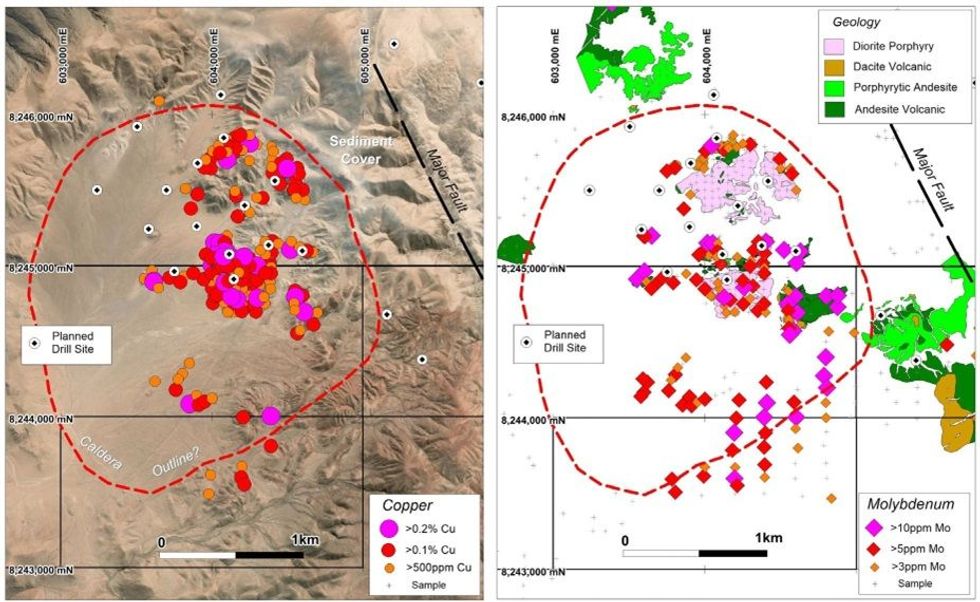
Geological mapping and rock-chip sampling has outlined a partially exposed potential copper (+/- gold) porphyry system, within a large-scale (3km x 2km) caldera-like structure containing extensive colluvial and younger sediment cover.
The initial drilling program will test areas containing relatively intense veining (quartz) and porphyritic dykes, where higher copper (up to 0.65% Cu) and gold (up to 0.3g/t Au) values have been found. The possibility of a buried porphyry copper system beneath the extensive cover within the interpreted caldera-like structure will also be tested.
Cangallo is located close to significant infrastructure and is approximately 25km from the town of Chala, and within 10km of the coast.
Commenting on the imminent commencement of drilling at Cangallo, AusQuest’s Managing Director, Graeme Drew, said:
“This is a very exciting time for the Company as we are about to commence the maiden drill program at this high-priority porphyry copper target in Peru which we have been working towards for over 12 months.
Cangallo has never been drilled before and demonstrates classic geochemical and alteration signatures which suggest there is significant potential to discover large-scale copper porphyry mineralisation.
Success at Cangallo has potential to create significant value for our shareholders and we look forward to keeping our shareholders updated as the results become available.”
Click here for the full ASX Release
This article includes content from AusQuest limited, licensed for the purpose of publishing on Investing News Australia. This article does not constitute financial product advice. It is your responsibility to perform proper due diligence before acting upon any information provided here. Please refer to our full disclaimer here.
Mine Sites Leveraging AI, Predictive Technology to Boost Efficiency and Protect Workers
Modern mining operations aren't always quick to embrace new technologies, but companies that do so often find they can improve yields, as well as produce better corporate margins and profitability.
At the recent MiningTech North America event, held in Burnaby, BC, speakers focused on how mining companies are integrating artificial intelligence (AI) and other technology to improve resilience and minimize downtime.
While adding these elements can introduce complexity, the consensus was that the right approach can make a real difference, not only for site operation, but also for employee health and happiness.
Asset management systems key for mine site operation
Maintaining operations at a mine site can involve tens of thousands of components, ranging from haul trucks to electrical infrastructure and even site employees. While new technologies have allowed mines to provide data on these many different components, they also add to the complexity of any mine site.
In his MiningTech North America presentation, Andrew Pruett, CEO of CoGo, broke down some of the challenges mines face and how robust asset management can be used to minimize downtime.
Pruett, whose background in technology allowed him to work on asset management systems in the oil and gas sector, recalled a story from his first year working in the mining industry.
He was onsite at a mine in temperatures as cold as -40 degrees Celsius when the power went out. The situation not only posed challenges for equipment, but was also dangerous for employees.
Management needed to account for all workers while investigating the cause of the power outage. Pruett explained that the team was prepared for this situation, ascertaining the status of critical systems, such as the mine's wastewater system, which could freeze quickly, and establishing generators to power critical components.
The problem turned out to be the result of an excavator severing a power line.
When Pruett asked why there wasn't an asset management system, the general manager said, "It's my job to do this.”
For Pruett, this response showed how critical people are to the operation of a mine; however he also saw a flaw in how the site was run. The general manager was able to draw from an understanding of the complete mining operation and decades of work within the sector, but he was the only one who knew what to do.
The speedy recovery hinged on the knowledge of one person.
That raised further questions. What would happen the general manager wasn’t there? What would happen when he retired? Shortly after, the company installed an asset management system.
Pruett and his company specialize in industrial asset resilience, which is not just about mitigating risks, but also about how an operation recovers from problems when they inevitably arise.
“You’re going to have people that are hurt, (but) nobody wants to talk about that,” he said. “You’re going to have vehicles that are damaged, you’re going to have transformers that blow up, you're going to have belts that burn out motors. It’s just going to happen, but it's how we’re able to recover from that that’s important.”
CoGo is focused on developing asset management systems that use technology that can be accessed remotely through the Microsoft Dynamics 365 ecosystem. The systems integrate with internet of things devices and AI to create predictive maintenance schedules, manage overall risk for events that can be foreseen and help recover from things that can’t, like natural disasters. Essentially, they optimize operations and improve company margins.
One component is using sensors to monitor every asset at a mine site. Operators can see in real time how a piece of equipment or infrastructure is operating and if it requires maintenance. This allows companies to schedule maintenance instead of letting critical equipment fail, which helps to minimize downtime.
Using AI and predictive technology to help mine workers
Beyond equipment, mine resiliency revolves around the health and wellbeing of employees.
When FoxMed founder Joao Gaspar moved with his wife from South Africa to Williams Lake, BC, to start a physiotherapy clinic, he discovered that most of the clients were involved in forestry or mining.
At MiningTech North America, he told the story of how the clinic was quickly overwhelmed by the number of local workers who needed therapy for work-related injuries.
Gaspar began using predictive technology to understand how workers were being injured and how to mitigate these problems. One example he used was haul truck operators suffering from lower-back injuries.
He found that often different operators had different truck setups based on height and weight. A simple suggestion he made was to change scheduling so that operators on specific trucks would have similar proportions.
While carrying out tests, Gaspar discovered a case study with a similar methodology was being carried out in Australia. The results from his testing and the study in Australia were nearly identical.
“Currently, this technology in Australia is looking at about 130,000 workers, and they have had some good results. They had a 69 percent reduction in industry costs in year one and 95 percent in year two,” Gaspar said.
He also spoke about working with companies to train workers on how to move better with AI.
Gaspar uses this technology to capture videos of workers in the field, and these videos are then analyzed with AI. Once the analysis is complete, Gaspar is provided with a report that grades how an employee moves and how they can improve their movements to reduce injury.
Technology's important role in the future of mining
The speakers at MiningTech North America represent a small portion of the thousands of technology companies working in the resource sector, but they outlined important challenges for the industry.
Understanding all assets at a mine site is critical for operators, whether they are looking at site machinery, electrical grid components or people essential to operations. New technologies can provide at-a-glance overviews of site status, helping to predict when problems may arise and how to better plan for proper maintenance.
Applying the right kind of technology in the right way can help companies maintain uptime and optimize mine sites.
Downtime and lost productivity can be far more costly than preventative maintenance in the long run. Ultimately, new technologies can help ensure profitability for companies and improve value for shareholders.
Don't forget to follow us @INN_Resource for real-time updates!
Securities Disclosure: I, Dean Belder, hold no direct investment interest in any company mentioned in this article.
Latest News

Redstone Resources Investor Kit
- Corporate info
- Insights
- Growth strategies
- Upcoming projects
GET YOUR FREE INVESTOR KIT
Latest Press Releases
Related News
TOP STOCKS
Investing News Network websites or approved third-party tools use cookies. Please refer to the cookie policy for collected data, privacy and GDPR compliance. By continuing to browse the site, you agree to our use of cookies.
